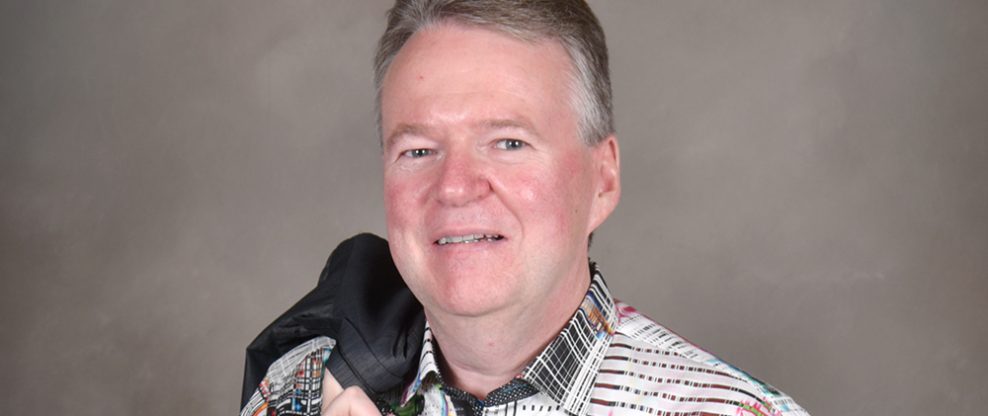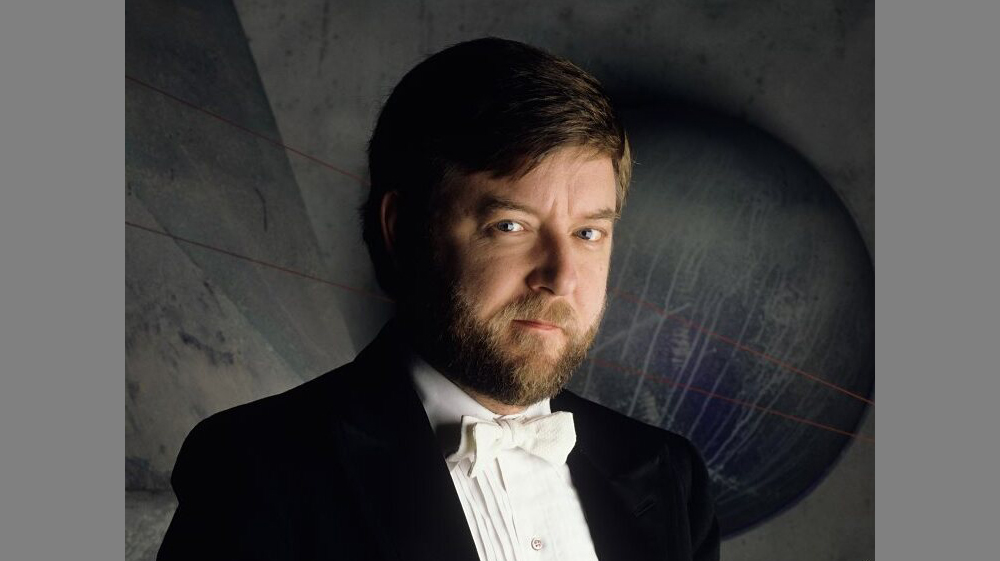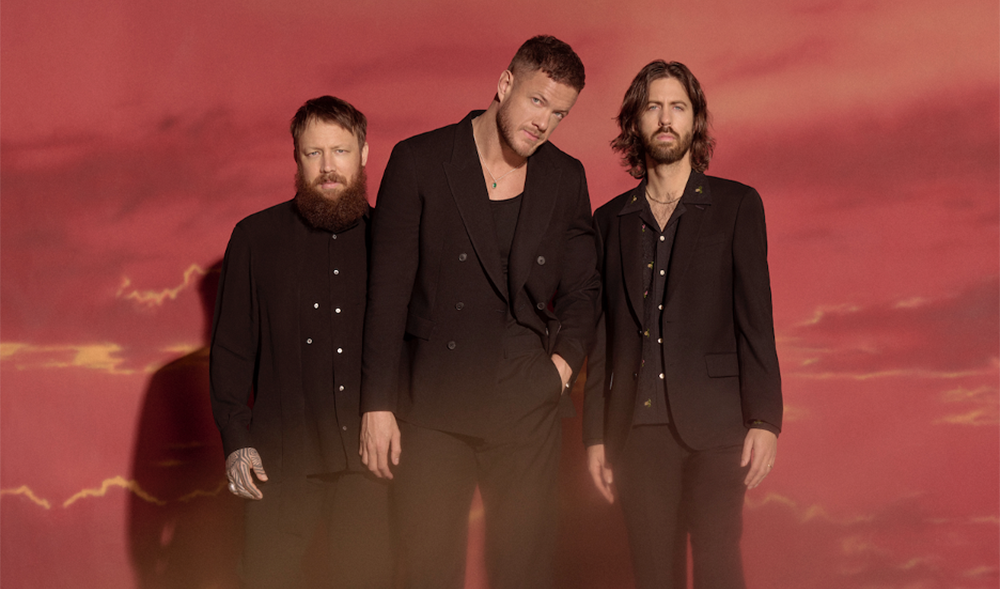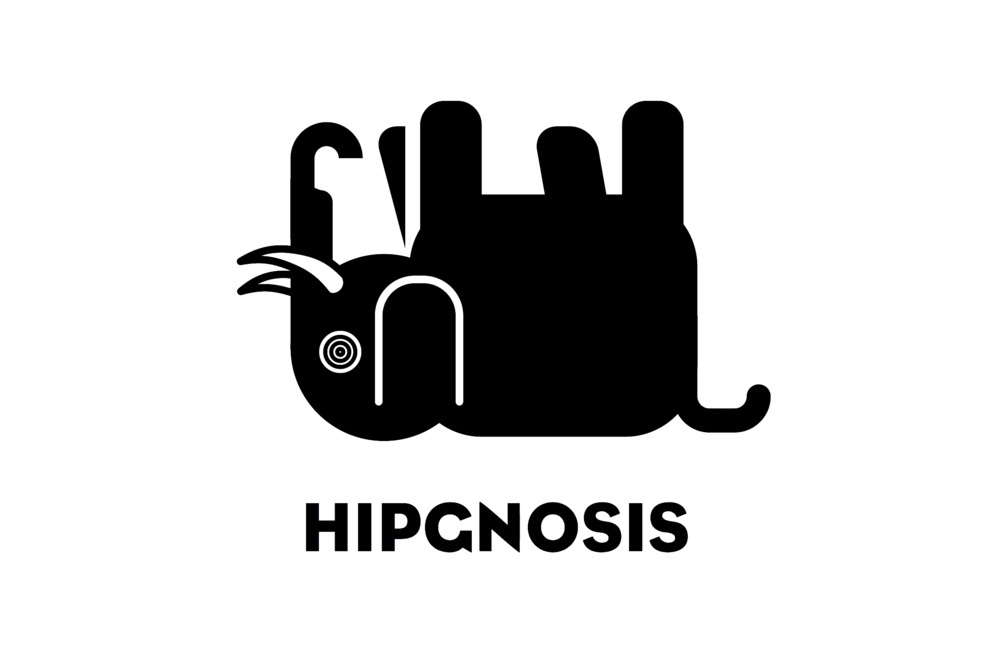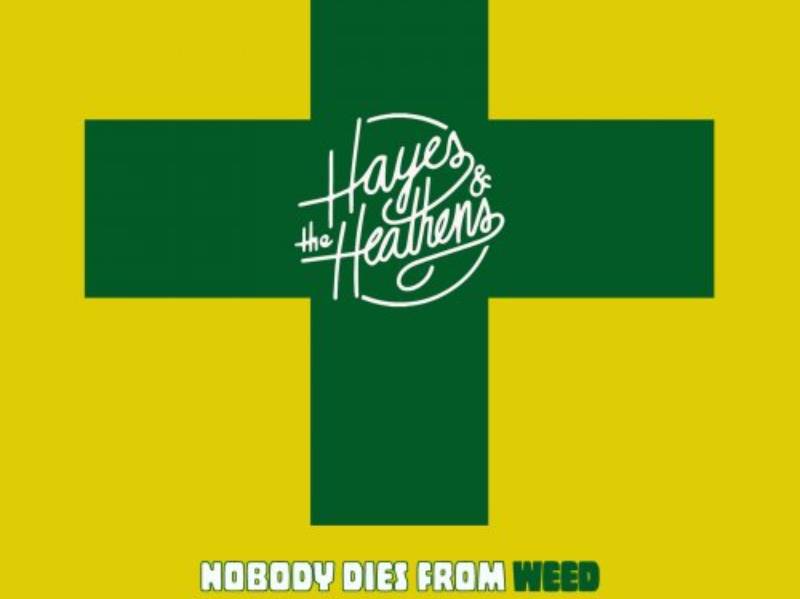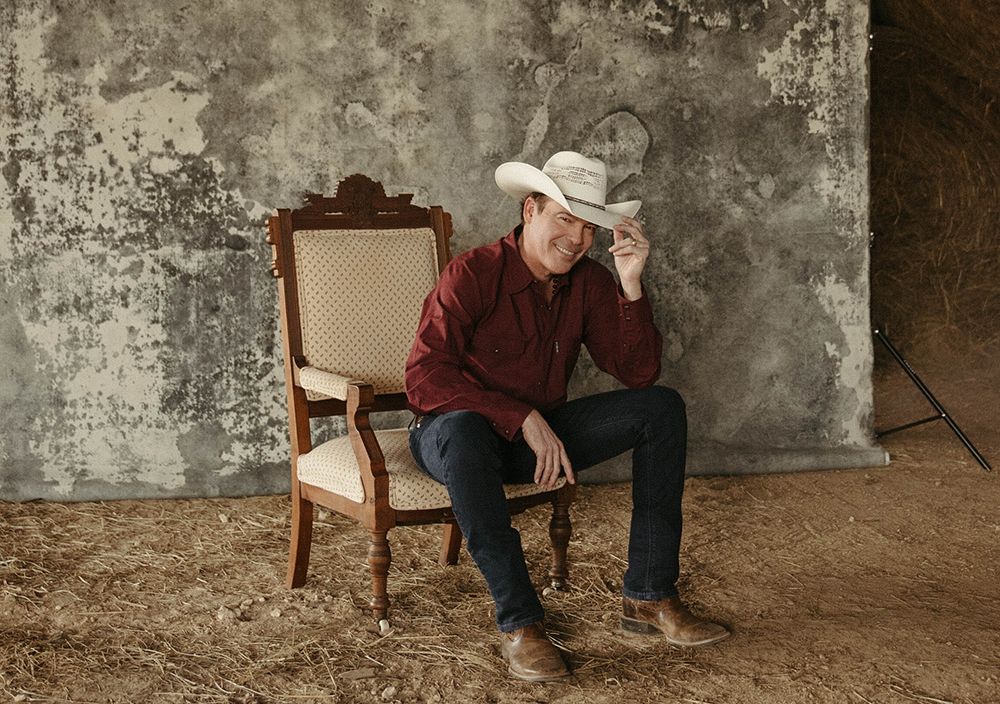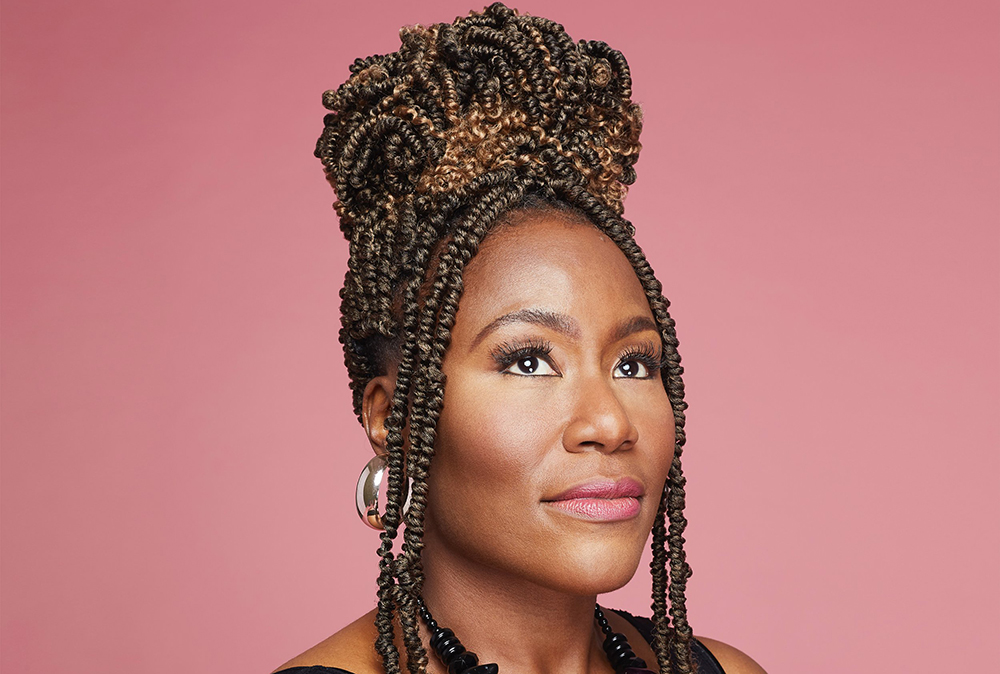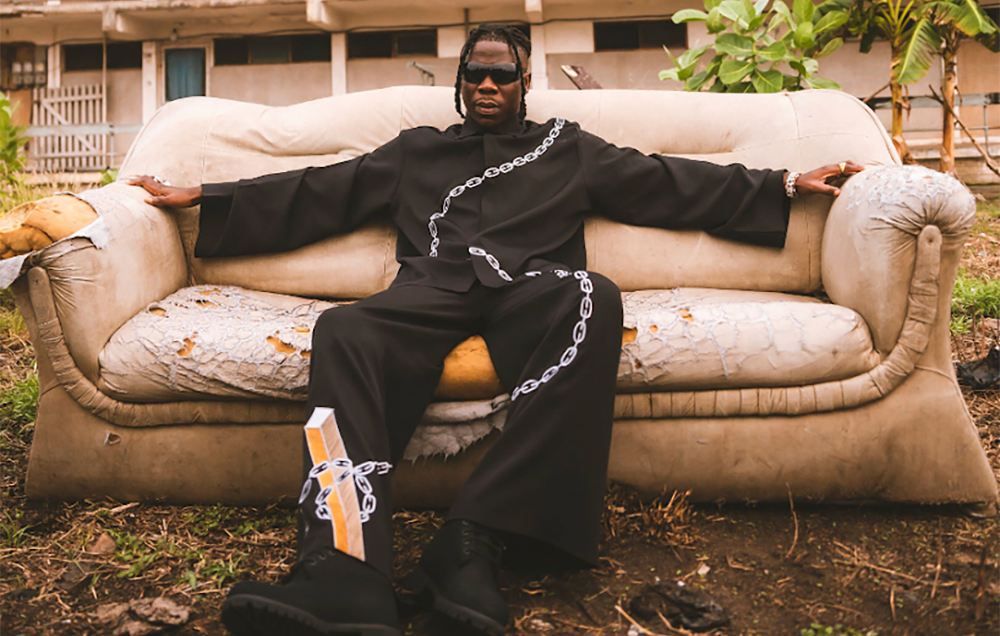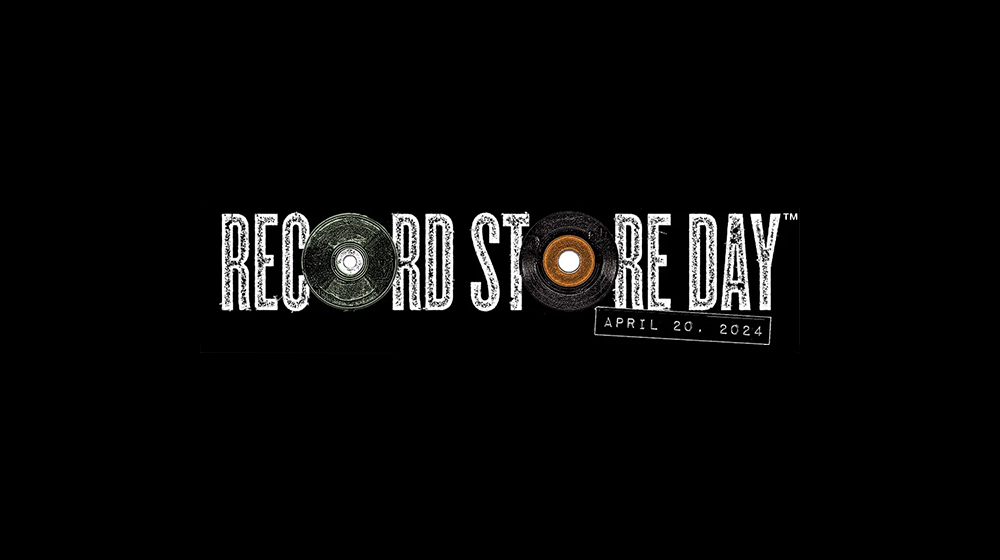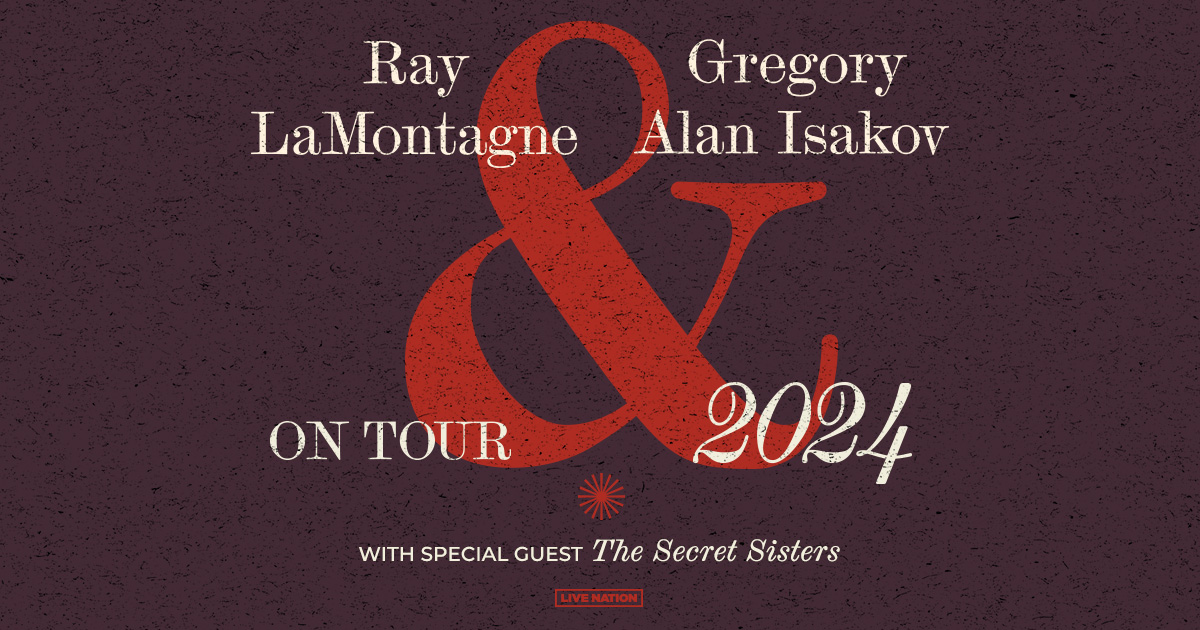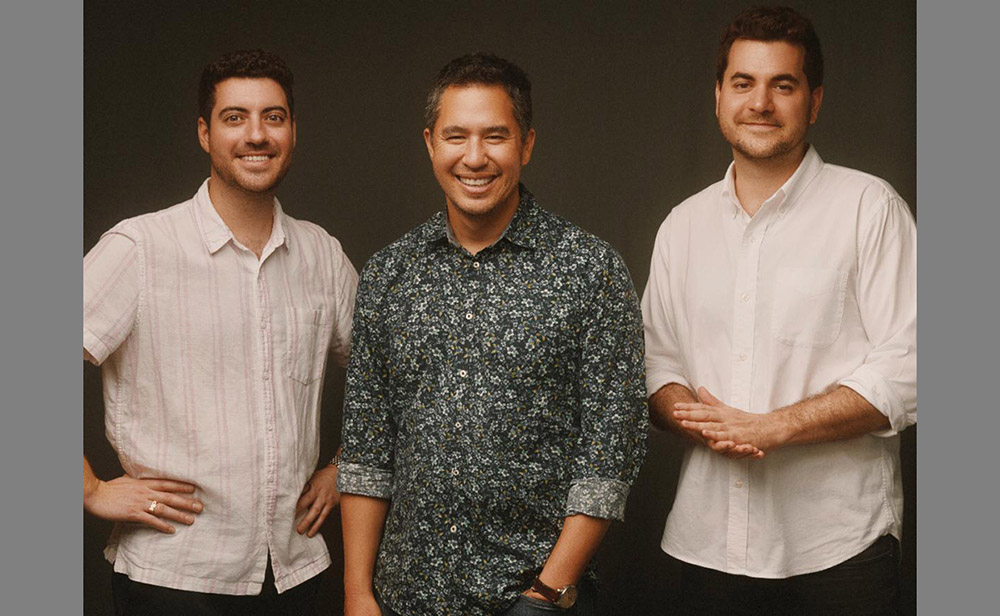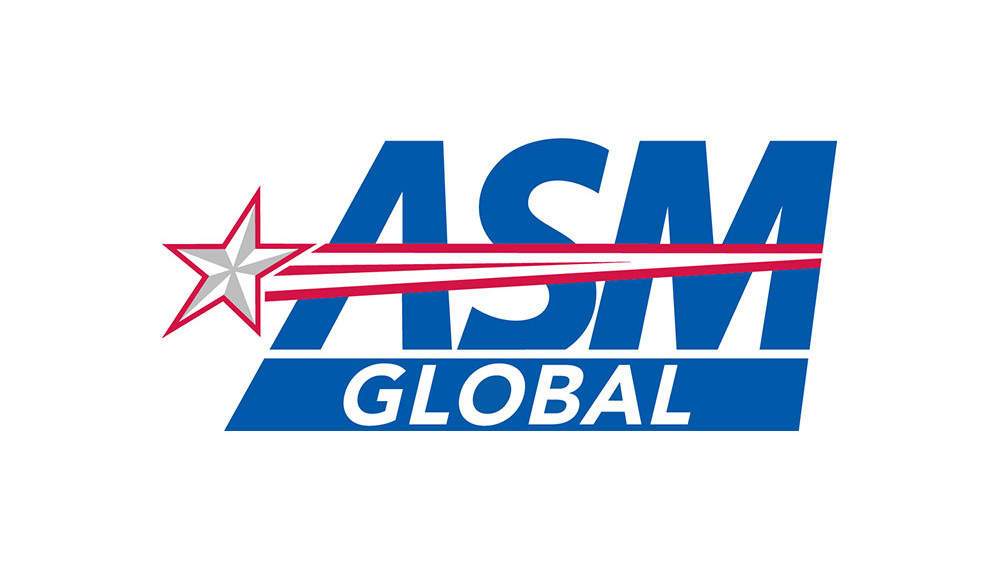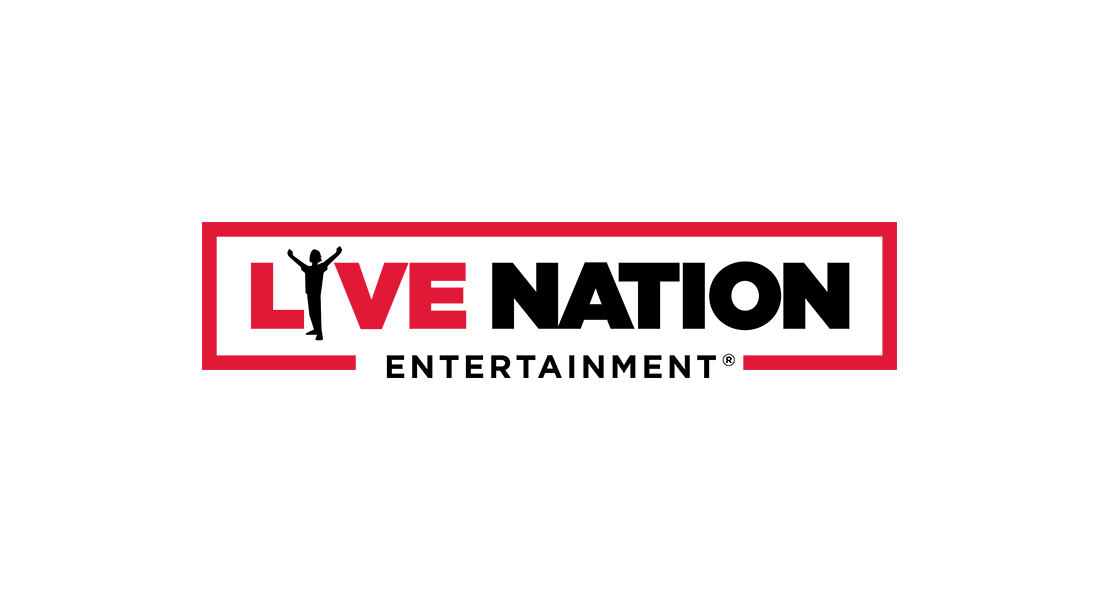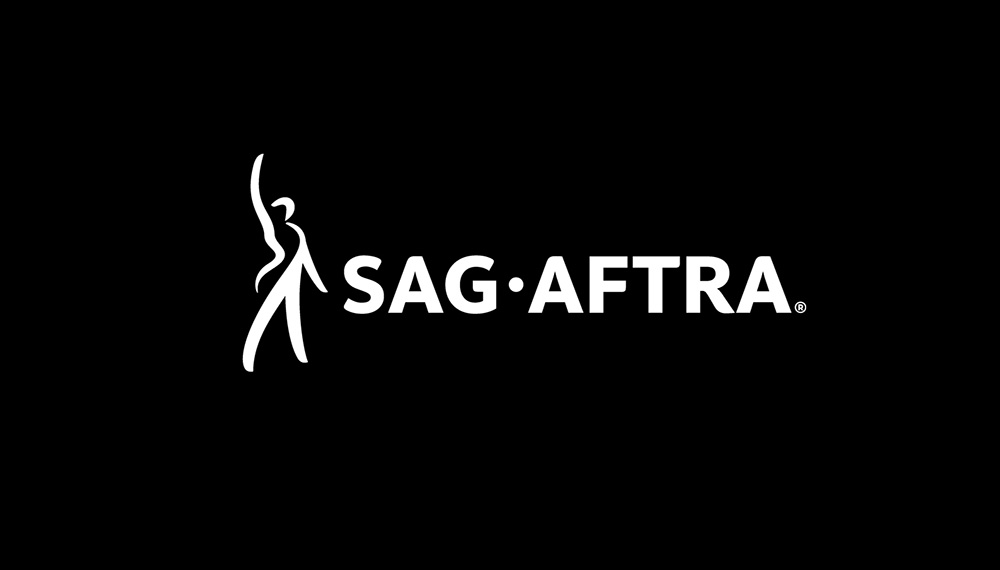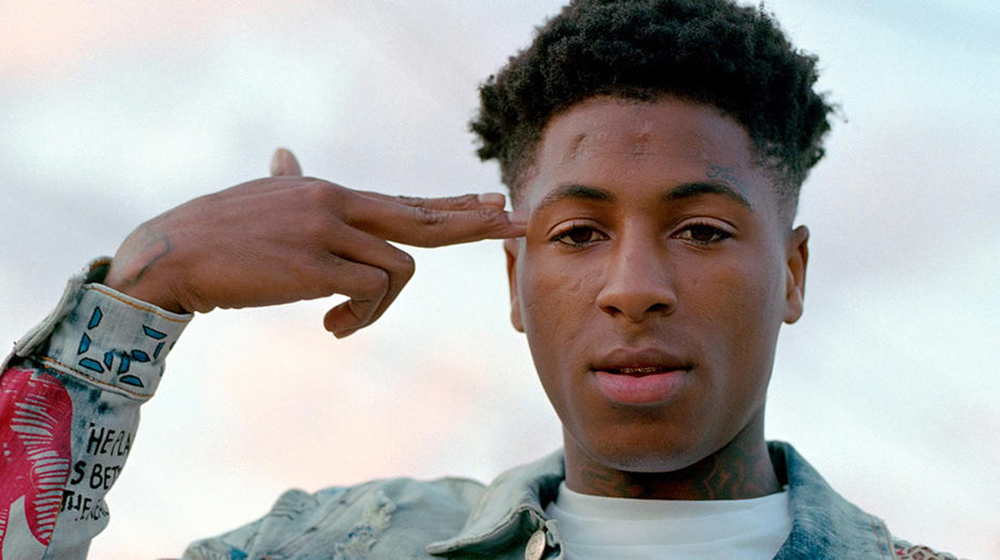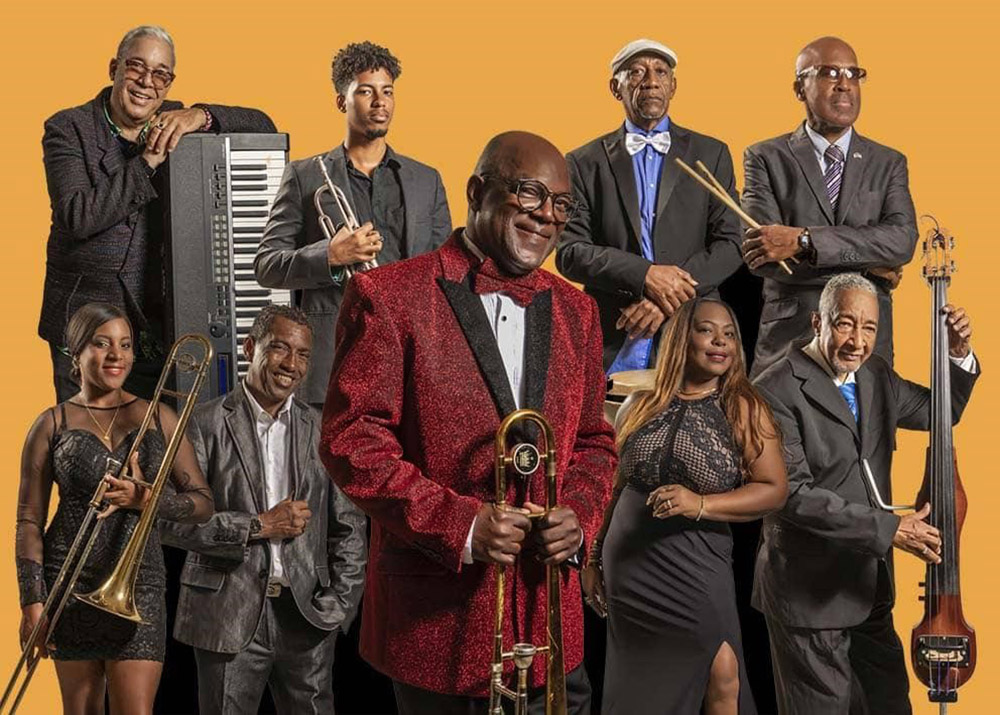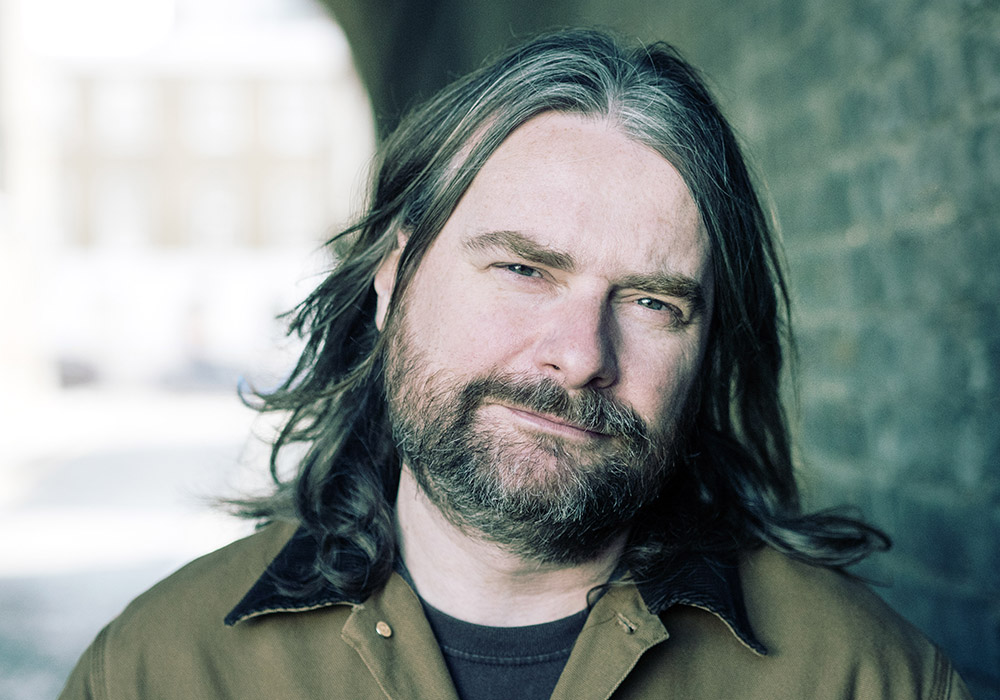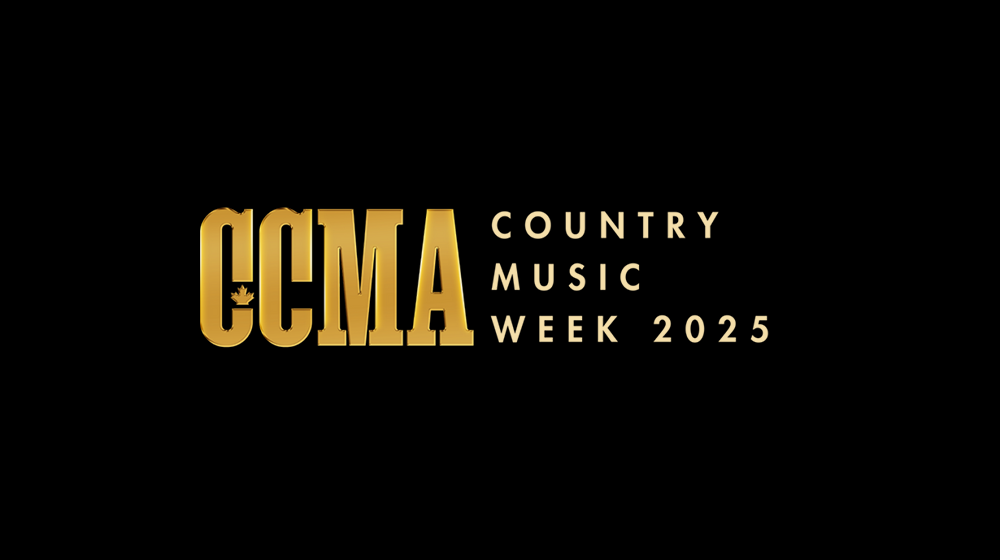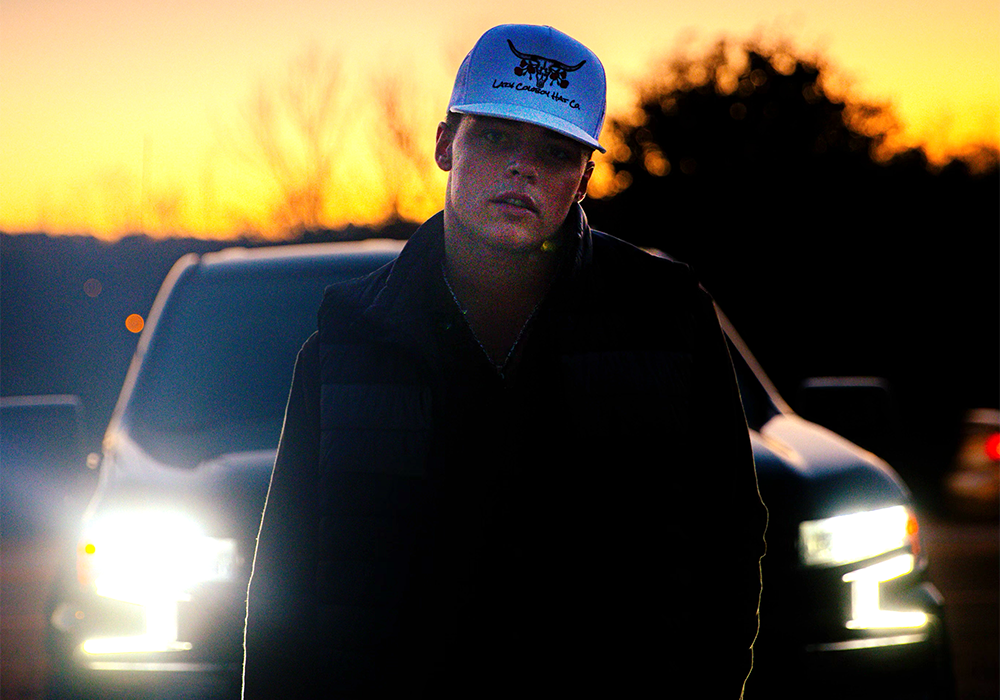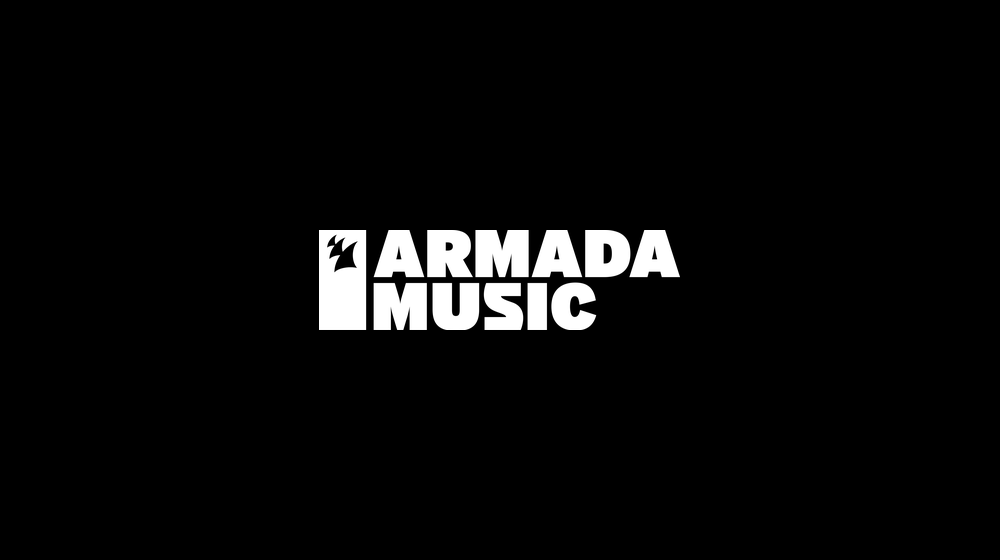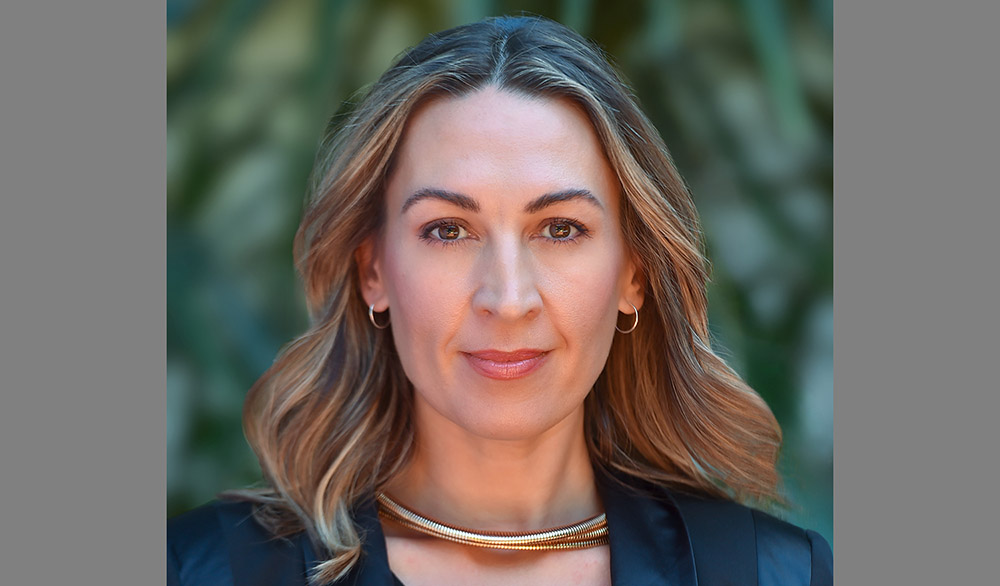This week In the Hot Seat with Larry LeBlanc: Brian Edwards, CEO, and President, Rocklands Entertainment Inc.
If there was a Mount Rushmore honoring Canadian musical artists, perhaps in the Canadian Rockies, it’d feature the legendary Canadian country performers Hank Snow, Wilf Carter, Tommy Hunter, Rita MacNeil, Stompin’ Tom Connors, and Carroll Baker.
All booked for decades in Canada by Brian Edwards of Rocklands Entertainment based in Peterborough, a speck of a city in Central Ontario.
Canada’s First Lady Of Country Music, Baker is the remaining survivor of this classic country posse.
“Brian Edwards–“The Promoter,” a 420-page book co-written with Ed Arnold, released last month, is a fascinating account of a multi-faceted career which began in 1980 when Edwards was a 17-year-old high school student.
It is conceivable that without Edwards’ lead as forceful pioneer country music promoter, and without his beliefs and ideals, that Canada’s country music universe, especially its impact in smaller rural markets, may never have happened.
While still attending Kenner Collegiate in Peterborough, Edwards began promoting shows, and dances. Attaining a booking license, and working under the Rocklands’ shop sign, he landed a booking with CBC-TV star Tommy Hunter, “Canada’s Country Gentleman.” Edwards brought Hunter into the agency fold and quickly followed up by booking such popular Canadian acts as Eddie Eastman, Carroll Baker, and the Leahy Family.
After Rocklands booked the Kitty Wells Family Show on several Canadian dates, Johnny Wright, Kitty’s husband, and co-star, recommended Rocklands to the legendary Wilf Carter (aka Montana Slim) which led to Canadian bookings by the agency of Hank Snow, Canada’s most famous country star, then living in Nashville.
Rocklands Entertainment’s portfolio since has consisted of multiple tours and shows in theatres, arenas, and concert halls by such non-Canadians as Charley Pride, George Jones, Tammy Wynette, Jean Shepard, George Hamilton IV, Bill Anderson, Mickey Gilley, Roger Whittaker, Stonewall Jackson, Roy Clark, Randy Travis, Mac Wiseman, Little Jimmy Dickens, and the Von Trapp children.
Rocklands also has overseen tours with such leading Canadian artists as Stompin’’ Tom Connors, Hank Snow, Rita MacNeil, Anne Murray, Wilf Carter, Tommy Hunter, the Carlton Showband, the Family Brown, k.d. lang, the Rankin Family, Ian Tyson, Frank Mills, and Red Green.
Even with miscues associated with being a promoter, Edwards has loved every single minute of his career. He’s always rebounded from setbacks because he says he’s always learned from his mistakes, and he always had something left to prove.
In “Brian Edwards–“The Promoter,” he finally tells the remarkable story of his fantastic rise from a Centre Ontario city to being a significant player in live music in North America.
Dammit, it’s an amazing tale.
How long did you work with Charley Pride?
Since 1989. So 31 years. Of course, he took up quite a bit of time in the middle when he went to Branson and did that theatre gig (at the Charley Pride Theatre) from about 1993 to about 2000 and really did nothing on the road. So there was a little hiatus in there. He did a few things on the road, but mainly he did 140 shows or more in Branson, and just stayed there.
You were left holding 2020 dates for him?
We had three dates planned for April in Winnipeg, Moncton, and Casino Rama in Orillia. We moved them to November, and we moved them from November to the next November (2021). It was one of those things that I hesitated to do, but the Winnipeg, and Moncton venues both wanted to do that because they had been sold out for months.
What was your reaction when you heard Charley had died due to complications from COVID-19 on Saturday, Dec. 12th? He was 86.
I was stunned, but when I got over that part late Saturday afternoon, I woke up Sunday thinking that I had had a bad dream. But, as the day went on, I thought of how thankful I was to be part of such a wonderful career and how being from Peterborough, Ontario, played so big into the scene. We did over 300 shows together. I also spent a lot of special personal time with him too at his home, and on trips we made to Vegas together. So I thought of that, and I put it (his death) into perspective. Very rarely do artists tour that long. The fact is that 10 years ago I wasn’t sure if he was going to keep touring. So I look at it this as we had a wonderful relationship, and the fact that we were able to keep touring at the age he was, you can’t be anything but thankful for that.
Charley broke into country music in the mid-60s when Jim Crow laws and customs were still present. African-Americans, in general, had a tough time of it. In 1966, RCA signed him and released his first single, “The Snakes Crawl at Night.” For years, Charley struggled to find bookings because promoters wouldn’t hire a black country singer, particularly in the American South, where “only whites sing country music.”
Charley went on to have over 30 #1 country hits in the U.S., and as many Top 5 hits. Officially, he sold 70 million records over 50 years of sales. He actually sold more, but a lot of his releases were TV compilations that the RIAA did not recognize at the time. He was awarded a Lifetime Achievement Award from the Recording Academy in 2017, and the Willie Nelson Lifetime Achievement Award at the CMAs last month.
Exactly. About 13 years ago, I started a company called Pillar Media, and we did a DVD, “Charley Pride Live In Canada,” which went double platinum in Canada Andrew Barnsley, who did the DVD with me, and who owned the company (which also did DVDs on Rita MacNeil, Stompin’ Tom Connors, and the Von Trapp children) is now the executive producer of “Schitt’s Creek,” as well as CTV/Bell Media’s comedy series “Jann,” starring Jann Arden, and Family Channel’s tween series “My Perfect Landing.” He just reached out to me to say he got his start working with Charley.
You know that Charley and Garth Brooks were friends for over 25 years?
I read a story that Garth was so shook up when he heard that Charlie Daniels had died in July because he thought it was Charley Pride. The original story on the wire was that Charley Pride had died. They corrected that quickly, and Garth called over (to the Pride home) and he was beside himself. Two weeks later, he was in Dallas recording with Charley.
(Garth Brooks released his latest album, “Fun” on Nov. 20th, 2020 with a duet with Charley on “Where the Crosses Don’t Burn,” a story of the friendship between a young white boy, and an older black man during segregation. The two recorded the song at Pride’s studio in Dallas in September.)
How was 2020 shaping up before the COVID-19 pandemic struck?
Oh, it was probably going to be the second-best year that I was ever going to have.
What did you have going on?
I had a show on the road called “Yesterday Once More” which was rather new for me. I certainly have never fooled around with tribute acts per se, but this is a good one out of Vegas. We were ready to go with 18 dates on March 18th which was 5 days after the COVID19 pandemic announcement.
(Laughing)
Oh yeah, well it gets better. I had 5 Charley Pride dates going out 6 weeks after that. And every one of them was full.
“Yesterday Once More” was part of a tribute series?
Yes. The first one was “Oh What A Night, A Musical Tribute To Frankie Valli & The Four Seasons.” The second one was “Four By Four” which was the Beatles, the Beach Boys, Motown, and the Bee Gees. This one was ABBA, the Carpenters, the 5th Dimension, and the Mamas & Papas.
All from ChapQuist Entertainment.
Two guys own the show from Las Vegas, (producer/director) Michael Chapman, and (choreographer) Paul Holmquist. And they have another partner who gets these shows going. These are Broadway and Vegas type guys. The bottom line is that every one of these shows sells out wherever we go.
What do you think will unfold for live music in 2021?
Well, I think that we are going to be in the same boat as we are in 2020. I don’t think there’s anything that I see that shows any big movement happening. Unless I am missing something. I think people will be scared, whether they have a vaccine or whether they don’t. I don’t think we are going anywhere.
I have said from the start it’d be 2022 before our lives normalize to some degree. And even then.
Oh yeah. Dates, people wanted us to move them ahead, and move them ahead again. I stopped that bullshit. I said, “No way. I don’t want anything moved ahead anymore because it’s not fair to the clientele, and it’s not fair to the system. Why keep moving these dates ahead when you can’t do them anyway? It doesn’t make sense to me.
Financial viability has always been tenuous for venues. Most live month to month. Some won’t be coming back without aid. So many venue owners are currently wondering how much longer can they go on. It’s “Do I sell my car? Do I mortgage my house? Do I empty out my savings?”
Part of the problem is that the venues didn’t have the money to refund the tickets (sold). That’s the problem. And they didn’t want me doing that (cancelling shows).
You’ve also got artists that have received advances, and they can’t afford to pay them back.
Listen, it’s so scary out there.
But am I wrong about 2022?
You are absolutely right. You are 150% right. I look at it this way. We have now pushed the reset button. Everything is reset. Everything. Venues, artists, everything. It’s not the same. And it’s not going to be the same. There no way you can say, “Great, the vaccine is out in February (2021), we can go on the road at the end of March. It’s not going to happen that way. It’s not. I have no desire about putting any money up for anything. I got burnt for $350,000 out there (this year), and I’m not too sure I want to do that again.
How are you surviving?
Thank God we have been successful over the years so we can survive. I have been able to watch the way everything goes, but do I want to go and do that again? I’m not sure I do. I don’t mean I want out of the business. I just don’t like anybody standing there with a button that says, “Next week, we are going to start everything up again” or whether you lost $350,000, we don’t care. We have to close because of the virus.” I don’t like that. If you are owned by a municipality you probably don’t care. But as a promoter, you do.
How many people work at Rocklands Entertainment?
Just myself and John Lester as a subcontactor, and we will add whoever we need with touring. But full-time, it’s just John and me.
At one time, you had 6 people working in the office.
I sure did. There were people coming into my house every day. The problem is that you are trying to find stuff for 5 people to do. I think that is how some of these big promoters get themselves into trouble. They have so much staff that they start taking tours that don’t make sense.
Early on, you decided to work within a very specific segment of country music, the more traditional side. An argument can be made that you brought Branson, Missouri-styled entertainment to Canada’s smaller communities by booking so many classic country artists in those markets.
(Laughter) For 40 years in a row.
You booked the Kitty Wells Family Show, Johnny Wright (Kitty’s husband and co-star), Charley Pride, Hank Snow, Roy Clark, Ray Price, George Jones, Roger Whittaker, Little Jimmy Dickens, Mac Wiseman, Mickey Gilley, Ronnie Prophet, and the Lawrence Welk Show. You were promoting dates and tours with acts that American and Canadian clubs and casinos largely were thumbing their noses at saying, “A little too old for us.”
It is funny that you say that because I ran into this at Casino Rama (outside Orillia, Ontario). They were bound to bet that Charley Pride couldn’t draw flies after 18 plays there. One of the most successful shows there ever. I thought they were full of it. So it was a struggle. If it wasn’t for the new entertainment buyer, Shawn Wilson, Charley would never have seen the light of day in there again.
Casino Rama has gone through several key personnel changes in its booking department.
Oh yeah. Larry Gregson (as VP of marketing) started that room off (in 1996) and then he went to Fallsview Casino Resort in Niagara Falls in 2006 (and on to H.I.T. Management & Consulting in 2012). So when I mentioned Charley’s name to Bill Carruthers (dir. of entertainment and events,1996-2006), he said, “Are you kidding?” The thing that I knew is that we could still do 3,000 or 4,000 tickets with them, and keep doing it year after year. So we went in there, and it was just magic. The first time we did three shows. And then we did two shows for many years, and then we started to do one show every year. It just never stopped.
Many of the acts you have booked had profiles in Canada due to their music videos, concerts, and interviews being featured on The Nashville Network (TNN) that beams into Canada); and being on “The Tommy Hunter Show” which ran on CBC-TV from 1965 until 1992. At one point, in the mid-80s, Hunter’s show aired on TNN.
All of the acts you were booking in the ‘80s on appeared on “The Tommy Hunter Show,” and on TNN.
Yep. Ray Price, and all of them.
Many American country acts then wouldn’t tour Canada on a regular basis because they could make more money on the summer fair circuit. Kitty Wells, Charley Pride, and George Hamilton IV were exceptions, and they were embraced by Canadian fans.
Well, that was the thing, and I started to learn from a lot of them that if they (country artists based in the U.S.) were coming to Canada, they had to have three dates. At the same time, they’d travel way out to Washington state and do one date, come home, and never thought anything about it. It’s funny what you say about bonding with the Canadian audience. It is absolutely true because they all had such a following with TNN in Canada, as well as with Tommy’s television show
We have to mention the impact of George Hamilton IV too.
You bet. You want to believe it. When he did that TV show (“The George Hamilton IV TV Show” from 1972-9) in Hamilton. You got it.
It was Canadian producer Manny Pittson who contacted George to do the TV show out of Hamilton. To give you an idea of how nationalist the program was, the show’s logo was his trademark Roman numeral lV superimposed over a Canadian maple leaf. The show was sold to Irish entertainment group RTE, and was shown in the UK, South Africa, and Australia.
(In his celebrated 1968 history “Country Music U.S.A.,” Bill C. Malone called George Hamilton IV, “One of country music’s most zealous ambassadors abroad” due to his extensive touring of Canada, Europe, the UK, Ireland, South Africa, Hong Kong, and the USSR.
George became particularly popular in Canada, where he recorded songs by Canadian songwriters like Gordon Lightfoot—recording the LPs “Lightfoot Country,” and “Early Morning Rain and Other Lightfoot songs”—and songs written by Joni Mitchell, Leonard Cohen, and Dick Damron. Several of his recordings, including, “Canadian Pacific,” “She’s A Little Bit Country,” “Countryfied,” and “North Country” reached #1 on the RPM Weekly chart in Canada while faring less well in the U.S.)
Whereas Charley Pride could play anywhere in America, Kitty Wells and Johnny Wright, Jean Shepard, and Hank Snow were restricted to regional pockets there where they were popular. They couldn’t tour those spots as consistently as they could in Canada.
Well, we’d go back to some of those places year after year, and it didn’t make any difference. Like (Tommy) Hunter, we did 21 years solid, I know that he’s an exception to what the American acts are, but it is pretty much the same type of thing because he was cut from the same cloth as far as the audiences knowing who he was, and they wanted to come out. The Kitty Wells Family Show was probably the most successful over time. We did some places 25 times over a period of years. It was crazy.
In the ‘90s, a program director with a rock background began programming one of Canada’s first New Country stations, and he would make fun of classic country artists. I told him, “What you are not understanding is that many of these classic country artists are family. Going to see these people perform is like going to see your aunt and uncle.” Most country artists at the time understood the fan relationship, and they understood touring led to the longevity of a career.
Well, touring is all they did. Kitty and Johnny were on the road almost 300 days a year. When they got home, they’d often sleep on the bus because they slept better on the bus outside than they did in the house. So they were just so used to be on the road and, if they left the Opry like some of them did back in the day because they had to work 50 weeks of the year or some stupid thing, these guys just kept going. That’s all they knew what to do. So for me, it was perfect. I loved it.
I remember when we had country singer Jeannie C. Riley on Ian Tyson’s CTV show, of which I was a co-writer. She flew into Toronto while her band drove up from Texas, and they drove back the moment the show was over.
Johnny and Kitty would do 1,000 miles overnight, and think nothing of it. It was crazy.
In your book, you say, “To this day I wouldn’t give you all the tea in China to establish an office in Nashville.” What’s your issue with Music City U.S.A.? You briefly lived there.
There’s a great book by Bob Eubanks (“It’s in the Book, Bob!,” published in 2004). Of course, he managed Porter Waggoner, Dolly Parton, the Lennon Sisters, and Barbara Mandrell long before anybody knew that he was also a country music promoter (starting out with Merle Haggard and Marty Robins). He talked about Nashville, about the death threats he received being from Hollywood, and people there not wanting him there. He wrote that Nashville is the hardest city in the world for people to accept anybody other than their own. You know, there’s a lesson there when I think of it. People there were lovely to me. Going to their houses, and drinking, and all of that other stuff, the dinners, and the lunches. But it wasn’t for me. That wasn’t who I was. I knew that I was just spinning my wheels down there for the sake of saying, “I’m from Nashville.” Nothing else made any sense. Nothing.
Agents, managers, and artists based in Nashville would have been receptive to you because they sought work in Canada.
That’s all they wanted. Exactly. Johnny and Kitty had this idea in their head that I could do this, and I could do that, and I liked the way that they thought. I was young enough to go for the adventure, but it didn’t make any sense. I was sitting after the fourth day there thinking, “What in the hell am I doing here? These two (Johnny and Kitty) don’t want anything to do with me. If I am booking them on their dates they do, but that was the end of it. Johnny was determined that I was going to become a big agent in the U.S. Hank Snow was very encouraging as well. They were encouraging because they wanted work. That’s what it was.
Two of the most popular and prolific country stars of the 1950’s were Kitty Wells and Hank Snow but most everybody in Nashville had turned their back on them by the ’80s.
Oh sure.
Despite releasing some 140 albums with more than 85 songs reaching the Billboard country chart, and after recording for RCA Records for some 45 years, the label unceremoniously dropped Hank Snow in 1981. Also, work with Hank once, and it was hard to work with him a second time. He was tough on associates.
Well, yeah, exactly. By that time, Tandy Rice and Don Fowler, and all these other big agents looking after these acts were wanting to go on to bigger and better things, and I got left in the dust. So they (the artists) thought that if this guy from Canada can do it in Canada, he sure can do it in the U.S. Well, that’s fine in theory, but if you don’t know the U.S., it doesn’t make any sense. It really doesn’t. It’s like sending me to China. I didn’t know the U.S. market at all.
You weren’t doing any dates in the U.S. at the time?
Not at that time in the ‘80s. That didn’t come for quite awhile. Other than with (the Canadian folk-roots band) the Leahy Family. I was doing quite a bit with them. A lot of fairs in New York, and Pennsylvania. That was fairly straight forward. I couldn’t go into Louisiana or even do a tour. I didn’t do Leahy until mid to late ‘80s, and we were doing mainly fairs and festivals. A totally different market. All I had to do was to showcase them at a fair convention and I would get 20 or 30 dates. You couldn’t go wrong. Those kids hit that stage, and people would be out of their tree, and they needed them down there.
You were able to place traditional country artists in Ontario markets like Peterborough, and Parry Sound, and throughout Atlantic Canada. You and Ron Sakamoto with Gold & Gold Productions—working in Alberta and into Saskatchewan, Manitoba, and British Columbia– were the first Canadian booking agents/promoters to recognize the importance of smaller Canadian markets.
It took decades before Canadian promoters began to attract Bon Jovi, the Backstreet Boys, Sheryl Crow, Mötley Crüe Brooks & Dunn, Alan Jackson, and Elton John to play all types of venues from St. John’s to Victoria. Places that were traditionally ignored in the past.
You two were the first to figure out that there was money to be made in those markets. It used to frustrate Canadian labels when their top American country acts wouldn’t play Canada because they could make so much more money on the U.S. fair and festival circuits. After Reba McEntire, Brooks & Dunn, Alan Jackson and others began playing secondary Canadian markets, attitudes changed.
Well, I tried to develop a formula going into the small markets that involved the community the best as I could without the risk of losing any money. I always felt that if I lost money, and they made money then they wouldn’t be mad at me, and I could keep going back to these places. Wilf Carter taught me that. He said, “The big cities are on the way to the small towns. That’s the only reason you use them. You stick with the small towns, and you can’t go wrong.” And he was right. He knew that all you do in the big cities is that you spend a lot of money. If you build a relationship in a small town, like Carleton Place, instead of going to Ottawa (about 46 kilometers west) or whatever, it will work out great. You don’t have all of the bullshit to put up with, and it’s always good to go in and leave a good taste in everybody’s mouth. It all worked. It was very successful.
You started as an agent and manager, and you eventually decided to be a promoter.
I was forced to become a promoter because if I wanted Kitty Wells or Hank Snow or Porter Waggoner to come to Canada, or anyone else, I had to have three dates. I could easily do one of them, and then I had to have two more to go with it. If I couldn’t get anyone to do them, I had to do them myself. So it became if I wanted to do anything with these acts, like Bill Anderson or Stonewall Jackson or whatever the case happened to be, I had to get three dates or they wouldn’t come to Canada. Some of those dates with Kitty Wells we were selling to nightclubs like The Shamrock or The Carlotta Club in Toronto, whatever it happened to be. She’d do a week downstairs.
Often the first date would be in your Peterborough hometown?
It could be Peterborough, and then one of these Ontario fairs. We did a lot of fairs over the years. It could have been Owen Sound or Blyth, Ontario. Wherever it happened to be. I got to the point where I thought that if I was going to make it work I would have to do it myself. I learned quickly how to do it with the guidance of Sean Eyre. Sean and I did a lot of dates, long before I had a booking license. We did a lot of stuff. I learned from him about promotion and other stuff. I figured if it worked here (in Ontario) it would work elsewhere, and that is how it started to unwind itself.
At the time, working out Lethbridge, Alberta with a similar small-town strategy, was Ron Sakamoto who became a legendary figure within Canada’s club, and concert world.
I love Ron. He’s a good man. We had lunch not too long ago. He came to see one of those tribute shows. I think it was “Oh What A Night,” and he sat there the whole day on a couch in the lobby, and all we did was talk the whole day. It was wonderful. It was just great.
(When he launched his own concert promotion company Gold & Gold Productions in Lethbridge, Ron Sakamoto first did shows with the Canadian acts Trooper, April Wine, the Stampeders, Bachman Turner Overdrive, Bryan Adams, and others.
Gold & Gold Productions grew by forging key partnerships with Blue Live with Michael Rapino, CPI Productions in Toronto, and Donald K. Donald in Montreal,
He also tapped into the expanding country market with shows by Randy Travis, Dwight Yoakam, the Judds, and Garth Brooks as well as Canadians Michelle Wright, Prairie Oyster, and Charlie Major.
Over time, expanding into Saskatchewan, Manitoba, and British Columbia, he oversaw Western Canadian tours by Bryan Adams, Kiss, Santana, and Van Halen as well as with such leading country acts as George Strait, Shania Twain, Tim McGraw & Faith Hill, Alan Jackson, Brooks & Dunn, and Keith Urban.)
Ron would have been your counterpart back in the ‘80s and ‘90s
That’s true.
Today, there’s also Ron’s ex-partner Jim Cressman, president of Invictus Entertainment Group in Penticton, British Columbia.
Like you, Jim has built an impressive portfolio of secondary and tertiary market contacts in Canada for international touring acts as well as benefiting his own roster.
He has been able to build up a roster of leading Canadian country acts including Jess Moskaluke George Canyon, Emerson Drive, Charlie Major, Aaron Pritchett, and Brett Kissel; and touring John Mellancamp, Rihanna, Kiss, Reba McEntire, Carrie Underwood, ZZ Top, Toby Keith, Maroon 5, and Train.
Still, with your focus on classic country and middle-of-the-road pop acts, you have largely operated in a lane of your own.
I probably had a lane of my own that I understood. A lot of people don’t understand these people in these small communities, and it is where the TLC (a slang definition for tender, loving care) part of it comes into it which I think they lost. They would get frustrated, and not fool with it. One of the things that I really had to establish myself in these small communities was to let people there know that I wasn’t from Toronto.
C’mon, really?
It was true. Because these people were intimidated by Toronto. The first time I went to Newfoundland a guy said, “ I hate you sonsabitches from Toronto.” I said, “Let me make it very clear, I’m not from Toronto.”
Was that in Grand Falls-Windsor in the central region of the island of Newfoundland?
Probably, one of those places. And I said to the guy, “You’ve taught me a real lesson today.” So the first thing that I did when I started dealing with the people from Newfoundland, who I love dearly. I would go in and say, “Let’s get this straight, right off the bat, I’m not from Toronto.” And they would look at me with a sigh of relief, “Oh good. Nobody is going to tell us how stupid we are.” I would say, “You are not stupid. Don’t ever expect that from me because that’s not the way that I think.” The same as with going through the Maritimes (the Atlantic Canadian provinces of New Brunswick, and Nova Scotia including Cape Breton). They knew I was from Ontario, but as soon as they knew I wasn’t from Toronto, the welcome mat was open. I think they were so very frustrated dealing with the big agencies in Toronto. They (agents that) couldn’t give a damn about them. As far as they were concerned, the people there couldn’t relate to all of this rider stuff, and all the other stuff (contact obligations) that just didn’t make sense.
In truth, the bigger Canadian booking agencies didn’t do much with country.
Absolutely. Yes.
You were lucky early on to hook up with manager Bob Cousins, and book singer Eddie Eastman (from Terra Nova, Newfoundland and Labrador) at the Academy Theatre in Lindsay, Ontario. After a few shows Bob, a school teacher from St. John’s, Newfoundland, brought you on board for 5 Eastern Canadian dates, including a show at an army base in Bangor, Maine.
After dropping you off in Fredericton to fly back to Peterborough, Bob carried on to complete the tour, but a car crash landed Bob in the hospital for nearly 6 weeks. Meanwhile, you did a show with Carroll Baker—originally from Port Medway, Nova Scotia– in Lindsay, and you were then able to successfully pair Carroll and Eddie together for tours. That got you a free pass in a lot of rural communities, especially down East because of who they were.
Exactly.
You have mostly steered clear of doing shows in the bigger markets
Larry, I have done lots of shows at Massey Hall, and Roy Thompson Hall (in Toronto), and elsewhere. All kinds of shows, including out in Vancouver. Trust me, I don’t dislike big cities. What I don’t like is it being so expensive in those halls that it is absolutely insane. When the hall makes more than you do, and when the stagehands make more than you do, that doesn’t make any sense to me. And none of it did make sense. So I always felt that if I did what I did, I didn’t have to worry about anybody else. They always thought that there was this guy from Peterborough doing his thing. If they ever knew that I was selling $8 or $9 million worth of tickets out of the basement of my house, they’d die. But Stompin’ Tom always told me, “Stay under the radar, and nobody will ever bother you.”
And he was right.
I love the story in the book of you being backstage at Hamilton Place (now the First Ontario Concert Hall) and you accosted a bunch of union stagehands that were standing around. And you said, “Aren’t you guys supposed to be working?” And they basically told you to take a hike, and that they didn’t work for you.
Listen, it (the union) almost destroyed that place because who in their right mind would sign a deal with stagehands that says at 5 P.M. that they go to time and a half? How stupid is that?
(The International Alliance of Theatrical Stage Employees and Moving Picture Technicians, Artists and Allied Crafts of the United States, its territories and Canada, Local 129 perform work on three distinct facilities, namely, Hamilton Place, the Hamilton Convention Centre, and Copps Coliseum.)
I recall at O’Keefe Centre in Toronto years ago that you had to rent equipment from a company said to be controlled by one of the union heads.
They did that at Massey Hall in ’90 when I went in there with Stompin’ Tom, and it was absolutely a nightmare. When we sold out two nights in there (Oct. 24th and 25th), the guy said, “I’ll fix this sonabitch from Peterborough.” They made me pay all of this extra money, and we’d have to start refunding tickets if I didn’t. What a crock. But I got back at them when they wanted him back the second time, I didn’t forget the first time. But listen, I was able to go out there and sleep at night, and do what I was doing, and not have to worry about a lot of this crap of going in and paying $7,000, $8,000, $10,000 for stagehands in those days which as absolutely out of their minds.
For what dates?
All of those dates in Toronto. And that would be the early 2000s, probably. Tom we had there in 1990. But it was all bad. Any of those. Not that it was bad. It just didn’t make sense to me. You come to Peterborough, and you get a stagehand bill for $500, and we do the same 3,000 people. It didn’t take me long to figure out where we should be.
Being a promoter is like being a high-wire act in that you can slip and fall and lose everything
The thing is that I had to be very careful. I learned really young that just because you like something you shouldn’t promote it. That is the last thing you need to do . You find out what you are comfortable with, and what you can sell is one thing, but you can buy a lot of stuff you like but that doesn’t necessarily mean that everybody is going to like it.
You got into trouble in 1983 promoting Gene Watson and Charly McClain over four Ontario dates, Sudbury, Sault Ste. Marie, North Bay, and Peterborough.
Tell me about it. It was horrible But it was all part of the puzzle. As soon as that happened.
There were only 400 to 500 tickets sold in each venue other than Peterborough. Your net loss was $38,000. A staggering debt for a newbie promoter.
It was horrible. It was a lot of money. The thing is that I learned a lot. I probably learned a $100,000 worth of lessons there quickly. Just because you like somebody doesn’t mean everybody else is going to like it.
You lost big money twice with Randy Travis.
(Laughing) Well, if I had got it the first time, I would have made a fortune.
For $5,000 per show in the ‘80s, you promoted Randy at Massey Hall in Toronto and Hamilton Place in Hamilton.
Greg (Slaight), the GM at CFGM in Richmond Hill (serving the Toronto region), told me not to take the shows. He told me Randy Travis wouldn’t draw in Toronto or Hamilton.
Then 20 years later, you promote Randy again, in Saskatoon, Calgary, and Edmonton over a Thanksgiving weekend, and paying him $50,000 or $60,000 per show, you lost $50,000.
I know. It’s crazy. But you know what (agent) Tinti Moffat at WME had called me about that thing. They wanted out of that date because his wife was sick, and this was the first time she wasn’t on the road with him. Tinti kept saying, “They will let you out of it.” But I said, “I have so much expenses in this, it’s cheaper to do it.” Strange as that sounded. But I got it out of my system. I didn’t go for any more shows, trust me.
Tell me about your home of Cordova Mines which is a semi-ghost town 60 kilometers northeast of Peterborough. It was one of Ontario’s gold rush boom towns in the 1890s. By 1940, the two mines had closed, but the homes in the town remain.
That is where I was born. I was only there until I was a year and a half. My mother had me there, and then my aunt and uncle adopted me, and I came to live in Peterborough. But growing up, I spent every weekend in Cordova because my grandmother and a couple of aunts were there. And I would spend my summers down there. I knew it well. You are right there’s still nothing to it at all. Absolutely nothing. But there’s Cordova Lake which has huge cottages on it now that are selling for $700,000 or $800,000 each, and they are making a fortune out of them. There are a lot of wealthy people there these days. It’s still the same old sleepy town that it always was.
Back when you were a teenager if you wanted to know about Hank Snow, Hank Williams, and Kitty Wells, Peterborough was the spot in Canada to grow up in.
That’s the spot. I was weaned on that stuff.
Years ago, Minnie Pearl told me about performing in Peterborough with Hank Williams in the 1950s.
Oh boy. That goes back.
Were you really gifted Stompin’ Tom’s 1971 album “Live at the Horseshoe” at the age of 8? ”
It was my birthday present, exactly. You know what’s funny? I knew the words to every song on the album. and I was just mesmerized by it. I remember going to school, and people looking at me saying, “What’s wrong with this kid? He’s got to be crazy.”
Were all of your friends into rock music?
Oh yeah.
Were you attracted to rock?
Oh, I love it. The house was full of it, whether it was Creedence or whatever it was. I have seen John Fogerty probably more than I’ve seen anybody. He’s fabulous. His son (Shane) is a hell of a player, eh?
Not to mention when doing any show in Peterborough, you had support from your buddy/partner at radio, “Sunshine” Sean Eyre.
(Laughing) Push, push, push. Exactly. Those were the great days, you know. All you had to do is know the deejays in town and you were great because that’s who helped you out. I didn’t want to buy a spot. I wanted them to talk about it (the show). So it was great.
Sean was one of your earliest mentors as you were starting out at age 15. While at CHEX, he deejayed a country radio show called “Wagonwheel.” It started as a one-hour bit but later became a two-hour venture due to strong ratings. He was the only radio personality spinning country music records at the time.
(Sean Eyre left CHEX in 1976 to follow an advertising career. He started Eyreline Productions, but it lasted just over a year. He then applied for an announcer’s job at CKLY in Lindsay, resurrecting Sunshine Sean for a spot there that lasted 9 years. In 2005, he returned to Peterborough as a part-time night announcer at Country 105.)
I’m surprised you didn’t go full-time into radio.
Oh, I did. When he did the show in Lindsay we were doing a lot of it together. I had a week shift there. I tried that out.
You and Sean still in touch?
He still calls me every day. He’s still a mentor. Trust me.
Charles Burge, your high school principal at Kenner Collegiate Secondary in Peterborough never gave you a hard time when you missed school for work, as long as your marks remained high. Nonetheless, in the early years, you held several jobs to make ends meet, including taking tickets at the Memorial Centre and DJing at a country bar.
At what point while assisting Sean at CHEX, as well as then working the ticket booth for Doug Nobes, who promoted shows with Charley Pride, Anne Murray, and Liberace at the Memorial Centre, did you think, “I can be an agent?” The idea came to you while you are still in high school.
It was such a natural thing. You’d get your 10% or whatever you got. As far as I figured being an agent when it is successful everybody made a lot of money, but me. When it wasn’t successful they’d come to you wanting to being the price down or they couldn’t come up with the money. You know what? I’m going to be in trouble anyway…
So you were an agent first.
You bet. For the Leahy Family, and for Joe Aylward (who recorded for Panther Records in the ‘80s, and later operated the Springville Honky Tonk club in Peterborough). And for the Carlton Showband for many years.
Was Tommy Hunter the breakthrough act for your newly-formed Rocklands agency? He was a recognizable star in Canada with his national CBC-TV weekly TV show which ran for 27 consecutive years from 1965 to 1992.
Yes, he was. That was the biggest thing. I think that it really opened the door at the time because the fact that I booked Tommy Hunter. If nothing else what it did when I put out promotional material I could put his name on some of it. It certainly lent credibility to it. His problem back in those days was he would go to Florida in the winter, and then come back, and do the television show. So there really wasn’t a lot of dates to do anyway. One or two dates a year. Listen his career took off in touring as soon as that television show ended (in 1992). Heck, we did that for 21 years, Every winter.
You were only 18 when you met Tommy Hunter. You were so young that he called you Sonny?
Yeah, he did. He sure did. In theory, I was Tommy’s business manager for many years. What that meant is that I was doing all of the shows plus whatever inquiries came in, we handled them. Any recording or television thing. The lawyer working with him knew no more about booking shows than flying to the moon. But I think that Hunter got frustrated because, like with many those (classic) acts, he probably had nobody interested in what he was doing because first of all, he was never available when they wanted him; and second of all, they were probably doubtful that he’d draw because you could see him (on TV) for nothing. The day, he got off that television show was great.
Tommy Hunter, Anne Murray, and Juliette were the last of the mega CBC-TV stars in Canada
“Our pet Juliette”
(Juliette Cavazzi was featured weekly on CBC-TV from the 1950s through to the 1970s).
Those three were the last of an era, and they had a profound impact on a generation, and a special place in Canadian hearts.
They did. Everybody knew them and felt like they were friends and relatives. I found Hunter’s dates the easiest to promote. It was just easy. Everybody knew him. We went out in January every year. Sold the tickets in November, and December as Christmas gifts. Bang! It was 21 years in a row. 40 shows a year. Bang! Over with. It was just easy. Before there wasn’t nearly the want but as soon as he left the television show it was the greatest thing that ever happened. They couldn’t get him for nothing every week. So people could come out and have the memories that they wanted. There were grandma and grandpa or mom and dad or the kids who grew up watching him. It was perfect.
(Highly popular during its long run, “The Tommy Hunter Show” hosted virtually every popular country act available. It also showcased up-and-coming artists including Garth Brooks, Alan Jackson, the Judds, and Shania Twain (known then as Eilleen Twain.)
Despite his popularity Tommy seemed to have an insecurity in contrast to his CTV rival Ian Tyson who was a noted songwriter and singer, and a real cowboy.
You know, I blame that on CBC, and those producers. They gave him this attitude that really sucked at the time. But I will tell you when I convinced him to go on the road finally (with his band, the Travelling Men) across the country a lot of that changed rather quickly because he became very relaxed. He just went out and did it, and it worked.
Earlier today, Gordon Lightfoot told me that Tommy was the best guitar chorder that he’s ever known. “He knew more chords than most anyone,” Gordon said. He and Tommy worked together on CBC-TV’s “Country Hoedown” show with Gordon as a square dancer, as part of the Singin’ Swingin’ Eight.
I know. “The Square Dancer,” as Hunter used to call him. Lightfoot tells the story that it was Hunter that taught him how to play guitar, and Hunter used to do a routine in the show that, “Gord would come in, and I would teach him different chords here and there.” And, Lightfoot told me the same thing.
You had to negotiate directly with a CBC-TV executive for the 2003 finale special “Tommy Hunter: Talk About The Good Times?”
That was fun. That was at a restaurant in downtown Toronto. The guy comes in dressed up in a Tommy Hunter sweatshirt. I thought that Hunter was going to lose it. He looked over at me, and said, “Why the hell are we here? I don’t want to deal with these assholes anymore.” I said, “Let’s just sit through this, and we’ll see how it goes.” He said, “You bring CBC back into the equation again. I got away from all of that. I don’t need all that crap.” Once they brought (producer/writer) Les Pouliot back in, it all changed.
Les Pouliot was the heart and soul of “The Tommy Hunter Show.”
Well, Les Pouliot was one of the greatest producers I’d ever met because he did a lot of stuff for Hank Snow and Johnny Cash. The reunion thing was great because they did a clip thing from over the years—and Tommy was able to say goodbye to people that he had done things on the show. He said, “There’s 36 years (including the radio years of the show), I can’t have any regrets. I just can’t.”
You also managed the Leahy Family.
There was a lot of work involved there. It was a lot. When you have 11 brothers and sisters. When they did their schooling, and going back-and-forth it became very apparent to me that I had to make a living. I couldn’t go back to school at that point. So I branched out. Everything happens for a reason. Sometimes it works out for the better. It freed up a lot of time for me to do a lot more things and spread my wings which I did. Touch wood it was very busy right from 1987 right through. I didn’t have too many stops and starts after that.
You also managed champion Canadian traditional fiddler Graham Townshend and his wife Eleanor.
I did. He was a pistol. I could put him anywhere and do anything. They called him “greyhound” because he could listen to a song, never look at a note, and play it back.
Stompin’ Tom Connors’ impact in Canada was so great that his death on March 6, 2013, was a day of national mourning in Canada; similar to the death of the Tragically Hip’s Gord Downie on October 17th, 2017. In addition to reports and obituaries published in the Canadian media, Tom’s death was also reported by the New York Times, BBC News, and the Xinhua News Agency, the official state-run press agency of the People’s Republic of China.
(“If you can’t identify with one of Connors’ work songs because you’ve never picked potatoes or crewed on a coal boat,” Robert Martin observed in the Globe and Mail following a January 20, 1973 Massey Hall concert, “He’ll get you with one about that small town you grew up in or lived in for a while.”)
In 1990, you and Sean were operating Sean Eyre’s Wired Woodshed Record Shop so you’d dealt with Stompin’ Tom Connors’ record label, Boot Records. Despite Tom being in a self-imposed exile from performing—a protest against the treatment of Canadian acts by Canadian talent buyers and show promoters–you wanted to book him. You sent him a Wilf Carter cassette and a letter after attending an EMI Canada party at the Matador club in Toronto. Then you sent him a note through EMI Canada’s president and CEO, Deane Cameron. Country Music News writer Henry McGuirk then called and said Tom had received your letter, and you were now invited to meet with him at his home.
For someone only 26, who grew up entranced by Tom’s music, admiring him as an artist, that must have been a big moment.
We were running the record store and I had had 4 or 5 years under the Rocklands belt doing Hank Snow stuff. I didn’t know Henry. I knew of him. I certainly knew what he did. He wrote that story in Country Music News which was sort of interview with Tom other than with Peter Gzowski (on CBC-Radio’s “Morningside”) that Tom had done.
So off you go to meet Stompin’ Tom at his home.
I did. I met Henry at some crossroad at the 401 (highway) and somewhere. I parked the car there, and we drove up into the middle of nowhere to this house.
Tom was incredibly suspicious of strangers.
Very.
The two of you agreed that night you would oversee a national tour for him.
It was that I either made the deal that night or we didn’t have a deal. It was about a quarter to six in the morning that it all started to take shape.
Were you freaking out over the possibility of doing a 6 month 70 date tour across Canada tour with Stompin’ Tom.
Big time. Big time.
You had no money to start preparations, and out of the blue, you get a $30,000 advance check from Tom?
No strings attached. No agreement. No nothing. And now word. The money just popped up in the mail.
Despite a limited education, Tom was unusually enlightened and exceptionally bright, if eccentric. When you eventually got around to a contract, Tom wrote a two-page document that your lawyer said was airtight.
He said that it was the most brilliant thing he’d ever seen anybody write, and there was no way it could be broken. I remember Deane Cameron talking about how Tom would take their (recording) contracts and rewrite them, and they were as strong as the one that Deane had written. Tom was very simplistic. This contract with me was two pages long but it was very precise.
Tom had the ability to slice though things.
Through bullshit. Exactly.
Among his requirements for touring was that there be no overnight stays with a lobby. That there must be a restaurant. Check out at 2 PM. And no credit cards to be used by anyone on the tour.
It was, “I love it. You should love it.”
You are talking about staying in motels.
Definitely, and in the middle of nowhere too.
And you had to space shows out too.
And the drives. The drives were the worst. I’d say, “It’s a day off. We are just driving 200 miles.” He’d say, “Edwards what’s wrong with you? That’s not a day off.” I’d say, “Well we aren’t doing anything,” and he’d say, “Well, I’m not a truck driver. Two hundred miles is a long time.” And I’m thinking, “I could do that in three hours.”
The tour started off in Owen Sound, Ontario.
Owen Sound, and then Wingham, and then Sudbury and Sault Ste. Marie and away we went.
All sell-out shows?
No. Once we left Ontario (going West) it was pretty spotty with the exception of Edmonton and Calgary and a couple of spots like that. It was really spotty. It was because I couldn’t do anything with the radio stations.
No Canadian radio station would play his recording at by that point because they’d clash with their playlists.
Well, that’s what he said. But they all wanted to promote the show. He said, “They are going to march into the CRTC– Canadian Radio-television and Telecommunications Commission, the administrative tribunal that oversees Canadian broadcasting operating at arm’s length from the federal government—and say, “Look what we did or Stompin’ Tom.” He said, “Edwards, if it costs you $10,000 on radio advertising I don’t care. I am not letting them do that.” And that is what we did. It broke my heart because that (radio support) is all I was used to was dealing with all of these DJs and radio stations. Programmers were really pissed off at me.
Stompin’ Tom’s rule is law.
I learned from Tom, a good lesson. “When you are working with me, you are working with me. This is how we are doing it. When you are working with somebody else you do it that way.” And I never forgot that lesson because a lot of bullshit is done in this business. You work with somebody, and you have to take somebody else, and everything else, and it’s a crock. Tom said, “You are not going to do that with me. If you are working with me, this is who you are working with. These are my rules.” I learned really quick. That’s how it works. And it was fine.
Did you have to do his staying up all night drinking regime?
No, I did not. No sir. I was one of the few exceptions.
He wrote that stipulation into the contracts of his backup musicians.
I signed all of those contracts. I know those contracts inside and out.
He really had a contract clause that the musicians had to stay up?
One night a week each one of them had to stay up. Here’s the thing though. They saw that contract before they went out on the road. I don’t recall tying any of them down to a chair. I heard some of them say stuff about it afterward, and I’d think, “Well, that’s not the way that I remember it.” They’d look at the contract, and if they had any questions, they would phone. Some said, “Well, I don’t drink.” And Tom would say, “I don’t care. I’m nocturnal. I want company.” I guess when they were on the road in the ‘70s that is what they did. There were two musicians and him, and they sat up all night and they talked.
You two worked well together right up to his passing.
He had an interesting line. He said, “Edwards I might not understand you, and you might not understand me, but we understand enough of each other that we can make this work, and have a business relationship. And that is why I kept it that way. I’d go on the road and one night I might stay up o 2 AM or 3 AM because I loved that he’d so some of those old country songs that I loved. He knew that and we would sit and visit and do our thing. But that’s it. There was no extra curricular activity on my part.
Did he plan out his funeral with you?
Well, I took notes.
When he told you about his renal failure by phone he didn’t think his death was going to be far off, a couple of days or a couple of weeks.
It was about 12 days from the time I met with him, and the time he died. As far as planning it out, he went down the whole thing, and we talked about it. I sent him back fax, and he agreed to everything. He actually picked up the phone for a correction. I had 53 albums, and it should have been 54. It hit me as being really funny. It could have been his humor trying to relax me because it’s a real tough thing to do a funeral like that. We’re all ready to go and the only one that wasn’t ready was him because he hadn’t died yet. It was really weird.
(A memorial for Stompin’ Tom Connors was held on March 13, 2013, at the Peterborough Memorial Centre in Peterborough, Ontario. The celebration included speeches by former governor-general Adrienne Clarkson and Ken Dryden. Testimonials were given or read from others, including Roméo Dallaire, Rita MacNeil, and Liona Boyd.
More than 40 artists had vied for a chance to take part in the tribute. Before his death, Tom chose the line-up, artists he had performed with including J.P. Cormier, Dave Gunning, Sylvia Tyson, and Dave Bidini.)
It became such a party down there. I had to license the whole place. For the private family funeral at the Highland Park Funeral Centre, we had about 130 people. For the Peterborough Memorial Centre memorial, there were over 2,800 people. It was full.
Your relationship with Red Green (aka Steve Smith) goes back to when he had a company that did a Stompin’ Tom Connors’ television production in 2011. Steve’s brother Dave was the company’s director of operations. That led to you booking and promoting Red Green shows.
The 2019 Red Green “This Could Be It” tour–the fourth tour by Steve of the U.S. and Canada, and which Steve declared would be his final tour, was his most successful. It ran from March 22nd to May 6th onto 39 sites in the U.S. The tour continued Sept. 19th in Grande Prairie Alberta for the start of 39 Canadian shows in 42 days, most of which sold out when announced.
We did some big stuff down there (in the U.S. In fact, for three weeks in a row, it was in Pollstar’s Top 20 tours of the week. I thought, “That’s pretty good for a comedian from Canada.”
Are Steve Smith and Stompin’ Tom Connors similar in any way?
In a way. Steve likes to work 14 days in a row, instead of two or three days, but the same tactics are there as with Tom; the same business ethics and all of that other stuff. We were trying to work out a deal, and Steve said, “I don’t want it to be a win/loss. I want it to be a win/win. I don’t want your money. If I wanted to make a deal with whatever money we make, we do a percentage on it.” I had never seen anything like it. He was just so focused on his career, and the fans as well. I’d never met anyone that knew the audience better than Tom did other than Steve Smith. They were both exactly the same.
I can recall Steve being in a band in the ‘60s, Jayes Rayders
He and Frank Mills talk a lot about that because they both had the same manager (Kevin Hunter who went on to manage Natalie Cole). They get together and share all of these strange stories about those days.
Will Steve tour again as Red Green?
Steve is determined that, unless something drastically changes, that he probably doesn’t have a lot of interest, especially right now, about going back out.
You and Frank Mills immediately clicked when you met. He’s the Canadian singer and instrumentalist best-known for his Top 5 hit, “Music Box Dancer” in 1991.
That was one of the easiest things I had to ever do. He was so popular. I just jumped in and picked off what Paul Mascoli (of Mascoli Entertainment Corporation) had set up. Paul had moved to the U.S., and I was doing some Frank dates. Frank called me, and said, “Paul is now doing this. Why don’t you pick up the strings?” And away we went. His Christmas tours were magic. Local fliers on them, and away we went.
Frank lived in the Bahamas for over 30 years and then moved to a farm in Vermont. And he has stopped touring.
He wants nothing to do with the road. I’ve tried everything I could to get him to return. He says, “I’ve done that part of my life.”
Larry LeBlanc is widely recognized as one of the leading music industry journalists in the world. Before joining CelebrityAccess in 2008 as senior editor, he was the Canadian bureau chief of Billboard from 1991-2007 and Canadian editor of Record World from 1970-80. He was also a co-founder of the late Canadian music trade, The Record.
He has been quoted on music industry issues in hundreds of publications including Time, Forbes, and the London Times. He is a co-author of the book “Music From Far And Wide,” and a Lifetime Member of the Songwriters Hall of Fame.
He is the recipient of the 2013 Walt Grealis Special Achievement Award, recognizing individuals who have made an impact on the Canadian music industry.

